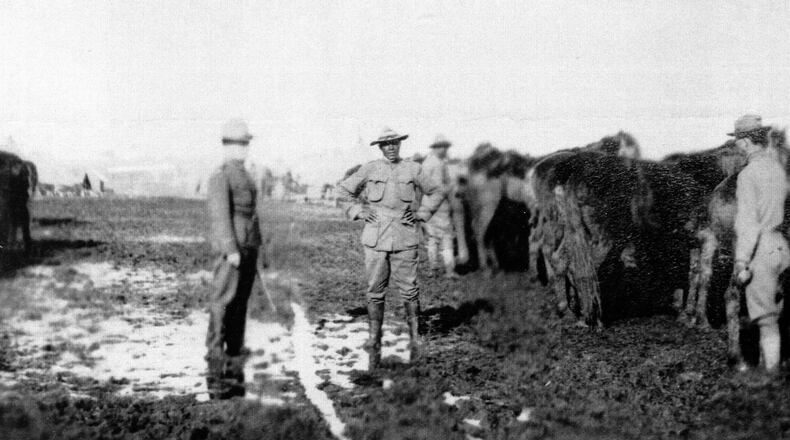At the end of the Civil War Young’s family left Kentucky and sought a new life in Ripley, Ohio, where Young thrived as a student in an integrated high school class and graduated in 1881. He went on to teach at a school for black students for several years.
“He was a fantastic and incredibly smart individual who rose through the ranks and went to West Point,” said Jonathan Jarvis, the former director of the National Park Service during a trip to Dayton in 2016. “This guy was incredibly smart and had a high level of integrity. He rose from very, very humble roots.”
Young faced racial insults and social isolation from fellow cadets and instructors, according to the National Park Service’s historical account. “He was only the third African American to graduate from West Point (in 1889) and the last for 45 years, to give a sense of what he endured and the racism and discrimination that was applied to him,” said Jarvis.
Months after graduating, Young joined the 9th Cavalry at Fort Robinson, Nebraska, one of six predominantly black outfits called “Buffalo Soldier” regiments. According to the National Park Service, “the term ‘buffalo soldier’ derives from the Plains Indians who encountered and fought the African-American troops on the frontier in the late 19th century.”
Young reported to Wilberforce University in 1894 on a detached service assignment to teach a military science and tactics course.
While there he became friends with intellectual W.E.B. DuBois who co-founded the NAACP and the poet Paul Laurence Dunbar whose prose he set to music. He and his wife, Ada, eventually made their permanent home in Wilberforce in a brick house a mile from campus on U.S. Route 42.
Young rose to the rank of captain by 1903 and was assigned to protect Sequoia and General Grant National Parks becoming the first African-American superintendent of a national park.
Credit: Contributed
Credit: Contributed
The following year marked the start of his career as a diplomat. He became the first military attache to Haiti and the Dominican Republic serving President Theodore Roosevelt. In 1912 he was promoted to major and served as an attache in Liberia.
As the United States was about to enter World War I his active military career hit a brick wall on his way to becoming the U.S. Army’s first African-American general. He was medically retired after a routine exam found high blood pressure and kidney problems.
His diagnosis is believed to have been a convenient way to keep him from commanding white troops. “Ultimately he was denied a promotion,” said Jarvis. “He should have been promoted to general but was denied that because of racism and discrimination at the time.”
Disappointed with the turn of events, Col. Young mounted a horse in Wilberforce and rode 500 miles to Washington D.C. to prove he was physically able to continue in the military. His protest eventually led to a return to active duty just before the end of the war in 1918.
He continued his career as an attache in Liberia and went on to an assignment in Nigeria, where he died of kidney disease Jan. 8, 1922. There he was interred but repatriated to the U.S. in 1923 and interred at Arlington National Cemetery.
“Col. Young is a hero to many. Colin Powell said he would never be who he is today if it wasn’t for Col. Young,” said Jarvis. “We think Col. Young is an inspiration to all children that want to rise and pursue education and stand above racism and discrimination and to persist and thrive.”
PLAN YOUR VISIT
The Charles Young Buffalo Soldiers National Monument in Wilberforce was designated part of the National Park Service by President Obama on March 25, 2013.
“Youngsholm,” as the house was named by Col. Charles Young, is the nation’s 401st National Park Service site and located at 1120 U.S. Route 42 East in Wilberforce.
For more information and tours: Website
About the Author




